Breaking News


Popular News


Discover the science and impact of solar and lunar eclipses on Earth. Learn about the stages and effects of these celestial events.Solar and Lunar Eclipses: An Astonishing Phenomenon
Eclipses have long captivated the human imagination, prompting both awe and fascination. Among these awe-inspiring celestial events are solar and lunar eclipses. In this blog post, we will delve into the captivating world of eclipses, exploring what they are, the science behind them, the stages involved, and their impact on Earth.
We will start by unraveling the mystery behind solar eclipses, shedding light on what causes them and how they differ from lunar eclipses. Understanding the science behind these phenomena will provide insight into the intricate workings of our solar system. Moreover, we will explore the stages of a solar eclipse, uncovering the mesmerizing dance of the Sun, Moon, and Earth that culminates in this breathtaking event.
Additionally, we will examine the impact of solar eclipses on Earth, from the way they have shaped ancient cultures to the scientific discoveries they have facilitated. Moving on, we will turn our attention to lunar eclipses, unraveling their enigmatic nature and the scientific principles at play. Join us on this journey through the cosmos as we uncover the wonders of solar and lunar eclipses.
Contents

What are solar eclipses?
What are solar eclipses?
A solar eclipse occurs when the moon passes between the sun and the earth, blocking the sun’s rays and casting a shadow on the earth’s surface. This phenomenon only happens during a new moon when the sun and moon are in perfect alignment.
During a solar eclipse, the moon’s shadow is cast onto the earth, creating either a partial or total eclipse, depending on the viewer’s location. A partial solar eclipse occurs when the sun is only partially obscured by the moon, while a total solar eclipse happens when the sun is completely covered by the moon.
When a total solar eclipse takes place, it is an awe-inspiring sight to behold as the sky darkens and the sun’s corona becomes visible. People from all over the world travel to witness this rare event, which lasts only a few minutes in any given location.
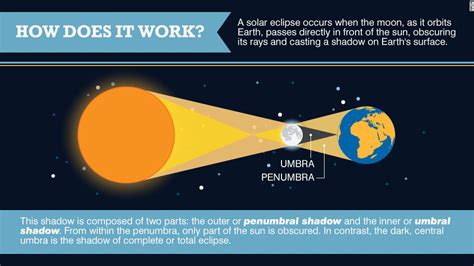
Solar eclipses occur when the Moon passes between the Earth and the Sun, causing the Sun to be fully or partially obscured. The scientific explanation for this phenomenon lies in the alignment of the three celestial bodies. When the Moon comes between the Earth and the Sun, it blocks the Sun’s light, casting a shadow on the Earth’s surface.
This alignment occurs during the new moon phase, when the Sun, Moon, and Earth are all in a straight line. The Moon’s shadow has two distinct parts: the umbra, where the Sun is completely obscured, and the penumbra, where only a portion of the Sun is hidden. The path of totality, where the Sun is completely blocked by the Moon, is the most dramatic phase of a solar eclipse.
During a solar eclipse, scientists have the opportunity to study the Sun’s outer atmosphere, known as the corona, which is usually hidden by the Sun’s bright light. The corona is visible as a halo of plasma surrounding the Sun, and studying it during an eclipse provides valuable insights into the Sun’s magnetic field and solar activity.
In addition to astronomical research, solar eclipses have been the focus of scientific interest in terms of their impact on Earth’s atmosphere and climate. Changes in temperature and air pressure, as well as the behavior of animals during an eclipse, are all areas of study for scientists seeking to understand the scientific effects of these celestial events.
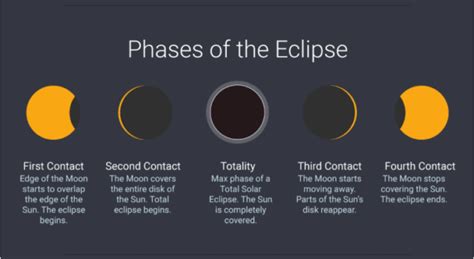
The stages of a solar eclipse
Before delving into the stages of a solar eclipse, it’s important to understand what a solar eclipse actually is. A solar eclipse occurs when the moon passes between the sun and the earth, blocking out the sun’s light and casting a shadow on the earth’s surface. There are several stages to a solar eclipse, each with its own unique characteristics and impact on the surrounding environment.
The first stage of a solar eclipse is known as the partial eclipse, during which the moon begins to move in front of the sun, partially obscuring its light. This stage is often marked by a subtle dimming of the sky and a noticeable decrease in overall brightness. As the moon continues to move across the sun’s disc, the sky darkens further, creating an eerie and somewhat surreal atmosphere.
As the eclipse reaches its peak, the second stage, known as the total eclipse, occurs. During this stage, the moon completely covers the sun, plunging the surrounding area into darkness and revealing the sun’s corona, or outer atmosphere. This is often considered the most awe-inspiring and visually stunning stage of a solar eclipse, as the sky takes on a deep twilight hue and stars become visible in the daytime sky.
Finally, the third stage of a solar eclipse is the partial eclipse. As the moon moves away from the sun, the sky gradually begins to brighten and return to its normal state, signaling the end of the eclipse. This stage is marked by a gradual increase in overall brightness and a slow return to normal daylight conditions.
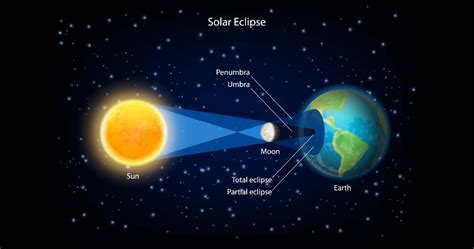
Solar eclipses, while a stunning sight to witness, can actually have a significant impact on Earth. During a solar eclipse, the moon blocks the sun’s light, causing a temporary decrease in temperature. This sudden drop in temperature can affect plant and animal behavior, as well as various atmospheric and environmental conditions.
During a solar eclipse, there is also a decrease in solar radiation reaching the Earth’s surface. This can have a direct impact on photovoltaic energy production, leading to a temporary decrease in solar power generation. Additionally, the sudden decrease in light can disrupt wildlife behavior, causing animals to exhibit nighttime behaviors during the day.
One of the most intriguing impacts of solar eclipses is the effect on human behavior. Many people experience a sense of wonder and awe during a solar eclipse, leading to a temporary disruption in daily activities. There have been reports of changes in mood and emotions during an eclipse, as well as altered behavior in animals and plants.
| Impact | Description |
|---|---|
| Temperature | The sudden drop in temperature can affect plant and animal behavior |
| Solar Radiation | Decrease in solar radiation can disrupt photovoltaic energy production |
| Human Behavior | People experience a sense of wonder and awe, leading to a disruption in daily activities |
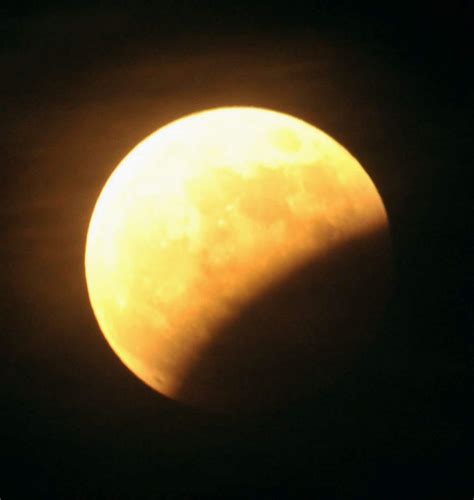
Lunar eclipses occur when the Earth comes between the Moon and the Sun, causing the Earth’s shadow to fall on the Moon. This happens only during a full moon, when the Sun, Earth, and Moon are aligned in a straight line.
During a lunar eclipse, there are three main types: penumbral, partial, and total. In a penumbral eclipse, the Moon passes through the Earth’s penumbral shadow, causing it to appear slightly darker. A partial eclipse occurs when only a portion of the Moon enters the dark umbra of the Earth’s shadow, while a total lunar eclipse happens when the entire Moon is engulfed in the umbra.
Throughout history, lunar eclipses have been the subject of various myths and superstitions in different cultures. Astronomers and skywatchers also study lunar eclipses to learn more about the early solar system and Earth’s atmosphere.
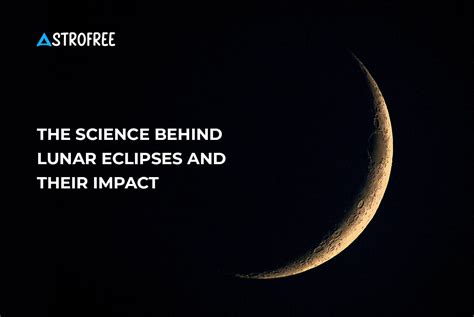
A lunar eclipse occurs when the Earth comes between the sun and the moon, blocking the sunlight that usually reflects off the moon. This phenomenon can only occur during a full moon, when the sun, Earth, and moon are aligned in a straight line. During a lunar eclipse, the Earth’s shadow falls on the moon, causing it to darken and appear reddish in color. This is known as a blood moon and is a spectacular sight to behold.
One of the key factors in causing a lunar eclipse is the tilt of the moon’s orbit. The moon’s orbit around the Earth is slightly tilted, so it doesn’t align perfectly with the Earth and sun. This means that lunar eclipses don’t occur every month, but rather occur in cycles as the moon’s orbit intersects the Earth’s shadow at specific times.
During a lunar eclipse, the moon goes through several stages, including the penumbral, partial, and total eclipse. The penumbral eclipse occurs when the moon passes through the Earth’s penumbral shadow and only a slight darkening of the moon is visible. The partial eclipse occurs when part of the moon is obscured by the Earth’s umbral shadow, and the total eclipse occurs when the moon is completely covered by the Earth’s umbral shadow, causing it to turn a deep red color.
| Stage of Lunar Eclipse | Description |
|---|---|
| Penumbral Eclipse | Moon passes through Earth’s penumbral shadow |
| Partial Eclipse | Part of the moon obscured by Earth’s umbral shadow |
| Total Eclipse | Moon completely covered by Earth’s umbral shadow, turns red |
Lunar eclipses have been studied for centuries and have been the subject of fascination and wonder for many cultures around the world. The science behind lunar eclipses involves a complex interplay of celestial bodies and their alignments, and these natural phenomena continue to captivate people to this day.

What causes a solar eclipse?
A solar eclipse occurs when the moon passes between the Sun and the Earth, blocking the sunlight and casting a shadow on the Earth.
What causes a lunar eclipse?
A lunar eclipse occurs when the Earth comes between the Sun and the Moon, causing the Earth’s shadow to fall on the moon, darkening it.
How often do solar eclipses occur?
Solar eclipses happen around 2 to 5 times a year, but they are only visible from specific areas on Earth.
How often do lunar eclipses occur?
Lunar eclipses occur roughly twice a year, but like solar eclipses, they are only visible from certain locations on Earth.
Can you look at a solar eclipse?
No, it is not safe to look directly at a solar eclipse as it can cause severe damage to the eyes. Special eye protection, such as eclipse glasses, is necessary to view a solar eclipse safely.
Can you look at a lunar eclipse?
Yes, lunar eclipses are safe to view with the naked eye. The moon takes on a reddish hue during a total lunar eclipse, which is often referred to as a ‘blood moon’.
What is the significance of eclipses in history?
Throughout history, eclipses have been associated with significant events or interpreted as omens. Many ancient cultures believed that eclipses were a sign of impending disaster or the wrath of the gods.